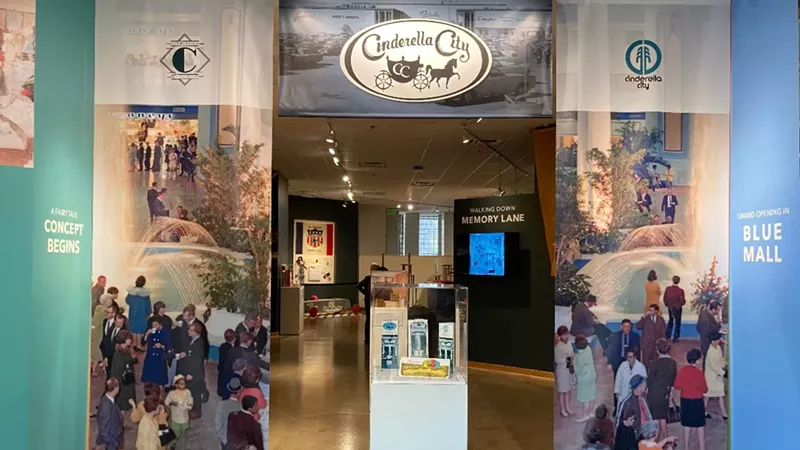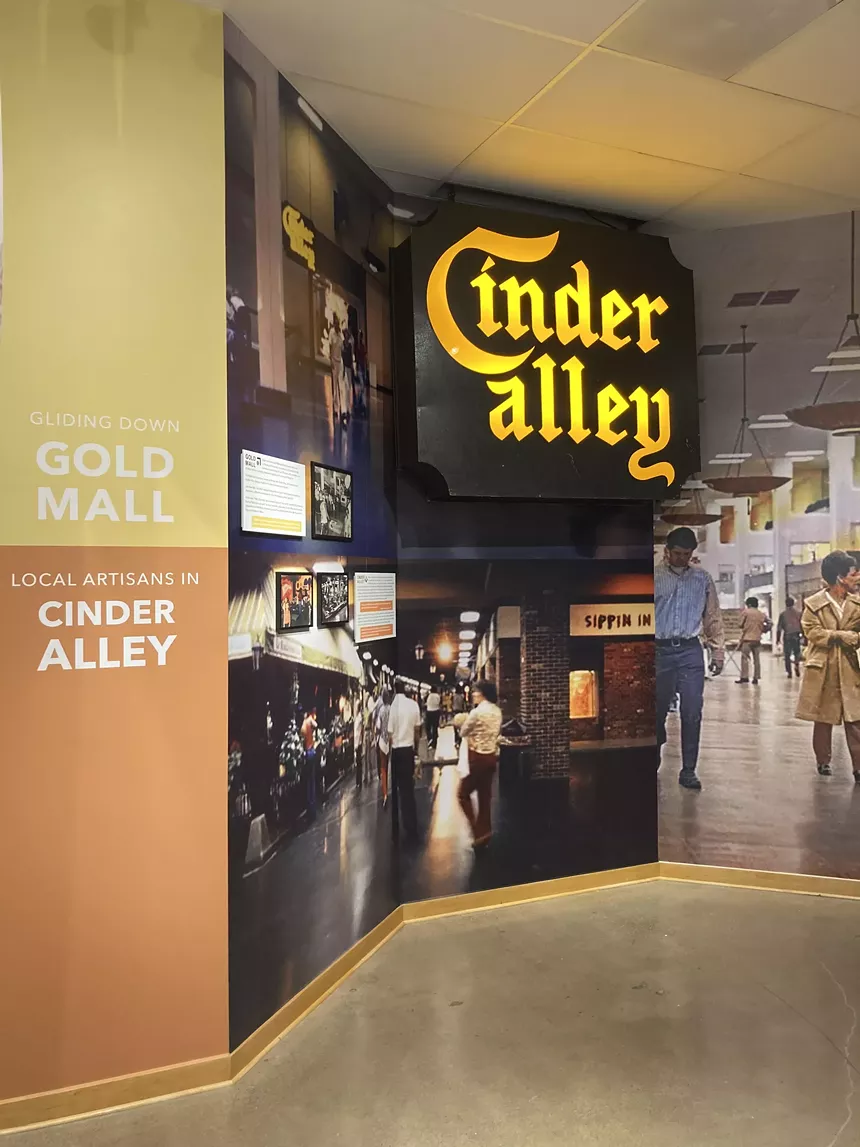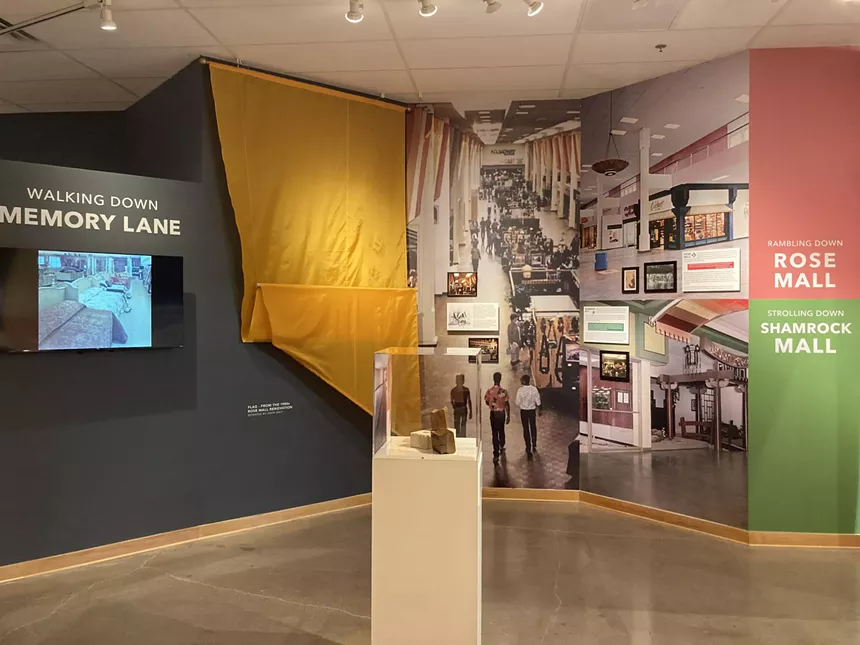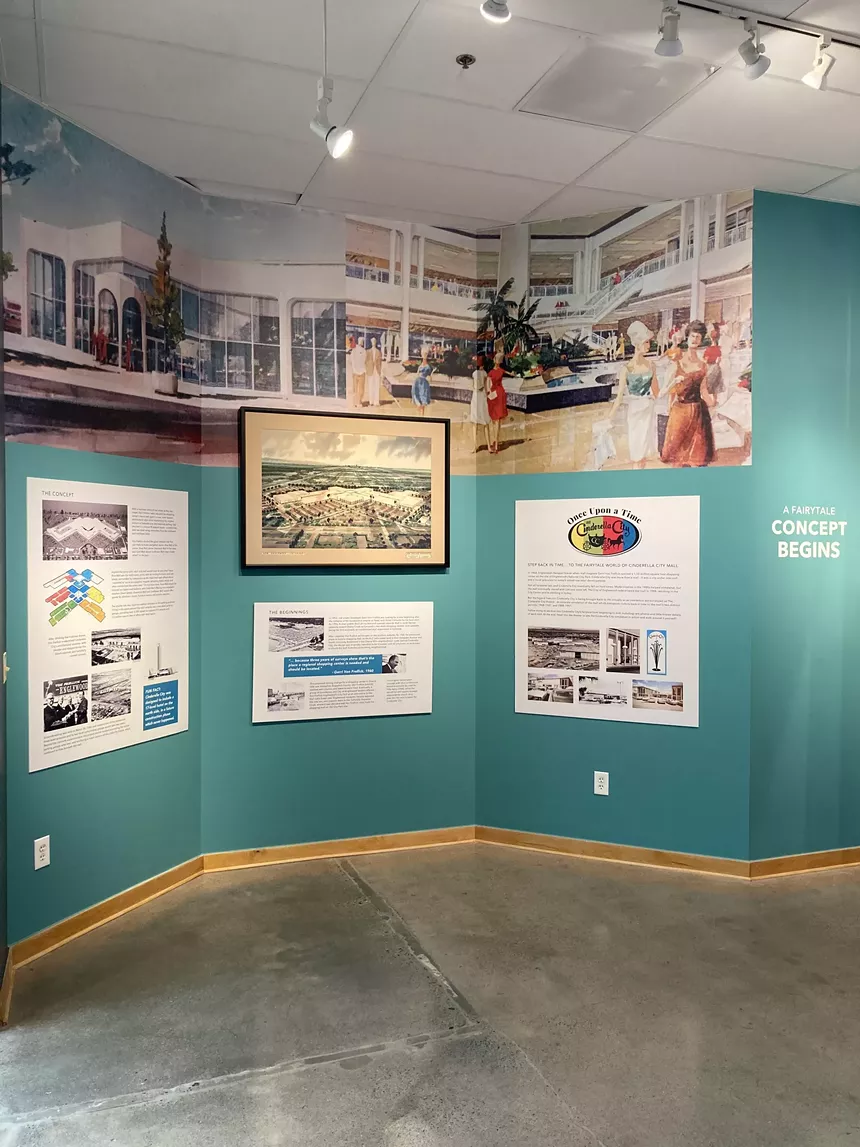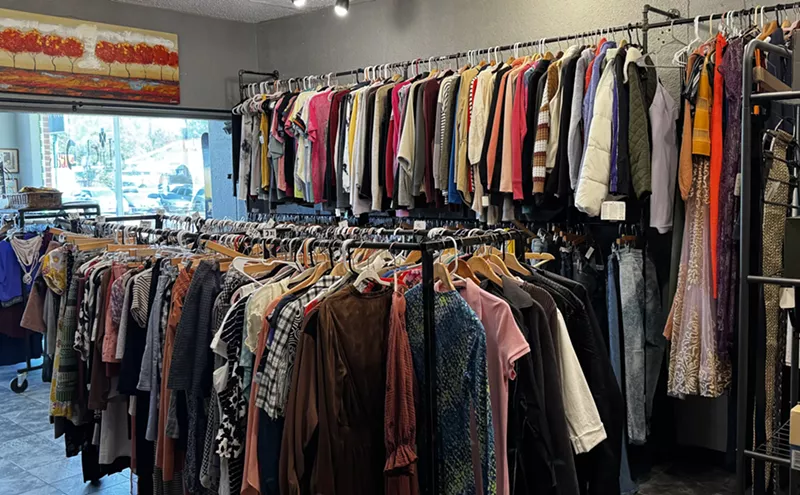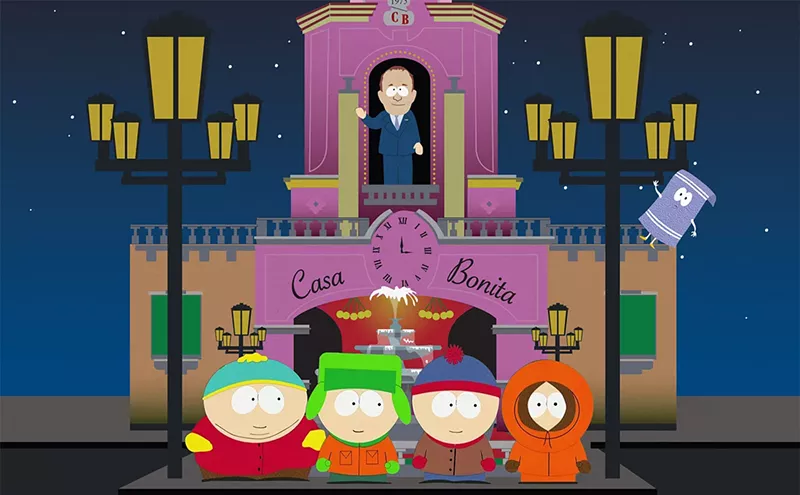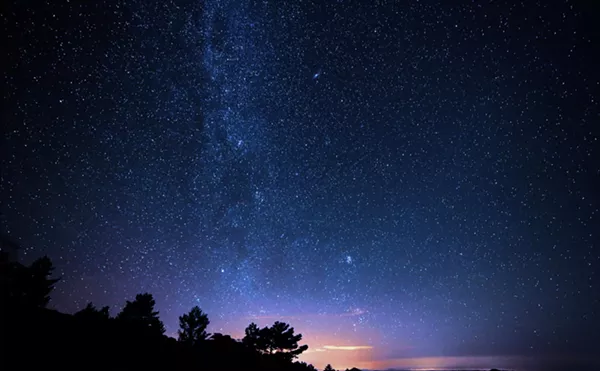Once upon a time, Englewood's Cinderella City was the largest shopping center in the West, and one of metro Denver's most popular attractions. But an exhibit that brings the enormous and idiosyncratic mall back to virtual life more than a quarter-century after its destruction has had a much lower profile.
This weekend, though, the three-dimensional rendering of what was once referred to as the place where "Your Shopping Dreams Come True" will provide a free flashback for those who wandered the sprawling edifice during its glory days, as well as an an eye-opening experience for younger residents who thought the arrival of IKEA Centennial and Buc-ee's in Johnstown were big deals.
"A lot of people are nostalgic about Cinderella City," notes Matt Crabtree, board president of the Englewood Historic Preservation Society, which made the exhibit the debut presentation at the Historic Englewood Museum. The museum opened in June inside the Englewood Civic Center, which incorporates the last remaining section of the mall.
In his view, that setting — which could be endangered if a redevelopment proposal floating around for several years comes to fruition and the building is demolished — makes the exhibit even more impactful. "One of the guests told us her husband proposed to her there," he recalls. "That's how much it meant to people, and it's really cool to be able to go back and reminisce about it and experience it in the 3-D realm."
The mall's conception and birth weren't exactly the stuff of fairy tales. The story began in 1960, when developer Gerri Von Frellick, already busy trying to complete what would become Villa Italia, a posh mall in Lakewood that's also gone, proposed an even larger retail undertaking to politicos in Englewood. There was pushback, however, due to his choice of location.
"Cinderella City was built on the old Englewood City Park, an area with a lot of history," Crabtree points out. "The plot of land was part of the Tuileries Amusement Park in the early 1900s. Then it became the National Film Company, which was bought by Alexander Industries; they filmed movie and ad reels up to 1930. When Alexander Industries moved out, City Hall was built there, but there was also the park, which had a swimming pool and a lot of other things people loved."
The battle wasn't brief. Englewood City Council actually voted to nix the mall in 1962, and after Von Frellick continued to press the issue, "there were lawsuits and protests," Crabtree notes. "But he ended up winning, and in exchange for taking away Englewood's only park, a series of pocket parks were built around town."
Groundbreaking took place in 1966, with the grand opening following on March 7, 1968. At the time, its 1.5 million square feet made Cinderella City the largest mall west of the Mississippi River, and its accoutrements included a giant fountain and a handcrafted Italian carousel that stood 28 feet high, as well as around 250 stores taking up so much indoor shopping space that sections were color-coded to prevent patrons from getting hopelessly lost. The six separate shopping areas were dubbed the Blue Mall, the Gold Mall, the Rose Mall, the Shamrock Mall and the Sunflower Mall, plus Cinder Alley, which gave off a decidedly street-level vibe.
In the beginning, Cinderella City was a smash, drawing visitors from across the region to its 7,000 parking spaces and generating plenty of revenue for Englewood. But the massive scale of the joint made keeping the money flowing a challenge. "The decline really started early on in the 1970s. There were some structural issues, some leasing issues," Crabtree notes.
By the mid-1980s, these problems forced the mall's operators to remodel, and many of the changes didn't turn out to be especially wise. Most notably, the fountain was removed and a new building was constructed to accommodate Broadway Southwest, a department store that was considered a big get at the time but wound up going broke a couple of years later. This departure was followed by plenty of others, and by the next decade, there were so many vacancies that walking through Cinder Alley, where darkness was part of the aesthetic, had become a downright scary experience — hence Cinderella City's inevitable date with a wrecking ball, which began swinging in 1998.
But memories of Cinderella City couldn't be crushed as easily as brick and mortar — especially for Josh Goldstein, a former architect-turned-senior product manager at Autodesk, which specializes in software. In 2018, the fiftieth anniversary of the complex's opening, Goldstein offered the first look at what he called a "fully-detailed digital recreation of Cinderella City Mall for a Virtual Reality experience." Over the next several years, as documented by Westword, he continued to refine the images, which allowed users to take simulated strolls through the center's two distinct eras — the early period and the 1980s revamping — with the help of vintage photographs and intel from Cinderella City fans.
Initially, Goldstein's efforts were intended for online viewing only. But they eventually moved into the real world.
"I've been volunteering as secretary of Historic Englewood for a couple of years," Goldstein notes. "The society wanted to start a museum, and we agreed that since I was on the board, a Cinderella City exhibit would make sense for the inaugural. I helped them design it and worked within their setup — and I was able to 3-D model the museum and put together how the exhibit would lay out. The idea was that we could enhance the exhibit with some artifacts and graphics and huge, printed-out, full-scale photographs to make it feel really immersive — and then we broke up everything into the five color-coded malls."
Cinder Alley is represented by an original sign from the Gold Mall, which Goldstein learned about through a post on Reddit. "Apparently, somebody with the City of Englewood saved it and put it in storage after the mall was torn down," Crabtree notes. "A former employee reached out to us as we were getting the exhibit ready, and we tracked it to a storage building near the wastewater treatment plant. Somebody had stashed it 26 years ago and it was still there.
"It weighed 120 pounds," Goldstein adds. "We had to figure out how to hang it. And a community member had a flag from the Rose Mall that he took during the demolition." These items and more are part of the exhibit, as is a theater and the main simulation, which allows guests to manipulate the graphics on a 185-inch screen with the help of an Xbox controller.
Even though the exhibit has been on public view since June, Goldstein isn't done tweaking. "It's incrementally improving, and that's a nice thing," he says. "Now that it's out in the open, it's a living, breathing thing, and if people who stop by point out some things I might have gotten wrong, I'm happy to make an upgrade."
The number of people who've seen it is actually rather modest, owing in part to the museum's hours. It's only open on Saturdays from 10 a.m. to 2 p.m., though glimpses of the exhibit can be previewed on the Cinderella City Project Instagram page. But Goldstein's interest in preservation goes beyond the exhibit. He's behind a change.org petition asking that the redevelopment proposal, dubbed CityCenter, use the old Broadway Southwest structure that currently frames Englewood Civic Center rather than knocking it down.
In his words: "The most sustainable building is the building that's already built — so let's not tear down our history if we can help it."
Because as Goldstein knows from personal experience, it's not easy to re-create something that's already gone.
Admission to the Cinderella City Project is free on Saturday, December 7, during the Holiday Market and Tree Lighting at Englewood Civic Center (it's usually $10 for adults; $8 for seniors, the military and Historic Englewood members; $5 for children five and up). The Historic Englewood Museum is located at 1000 Englewood Parkway; learn more here.

Audio By Carbonatix
[
{
"name": "GPT - Billboard - Slot Inline - Content - Labeled - No Desktop",
"component": "23668565",
"insertPoint": "2",
"requiredCountToDisplay": "2"
},{
"name": "STN Player - Float - Mobile Only ",
"component": "23853568",
"insertPoint": "2",
"requiredCountToDisplay": "2"
},{
"name": "Editor Picks",
"component": "17242653",
"insertPoint": "4",
"requiredCountToDisplay": "1"
},{
"name": "Inline Links",
"component": "18838239",
"insertPoint": "8th",
"startingPoint": 8,
"requiredCountToDisplay": "7",
"maxInsertions": 25
},{
"name": "GPT - 2x Rectangles Desktop, Tower on Mobile - Labeled",
"component": "24956856",
"insertPoint": "8th",
"startingPoint": 8,
"requiredCountToDisplay": "7",
"maxInsertions": 25
},{
"name": "Inline Links",
"component": "18838239",
"insertPoint": "8th",
"startingPoint": 12,
"requiredCountToDisplay": "11",
"maxInsertions": 25
},{
"name": "GPT - Leaderboard to Tower - Slot Auto-select - Labeled",
"component": "17676724",
"insertPoint": "8th",
"startingPoint": 12,
"requiredCountToDisplay": "11",
"maxInsertions": 25
}
]

